
llm-verified-with-monte-carlo-tree-search
LLM verified with Monte Carlo Tree Search
Stars: 270
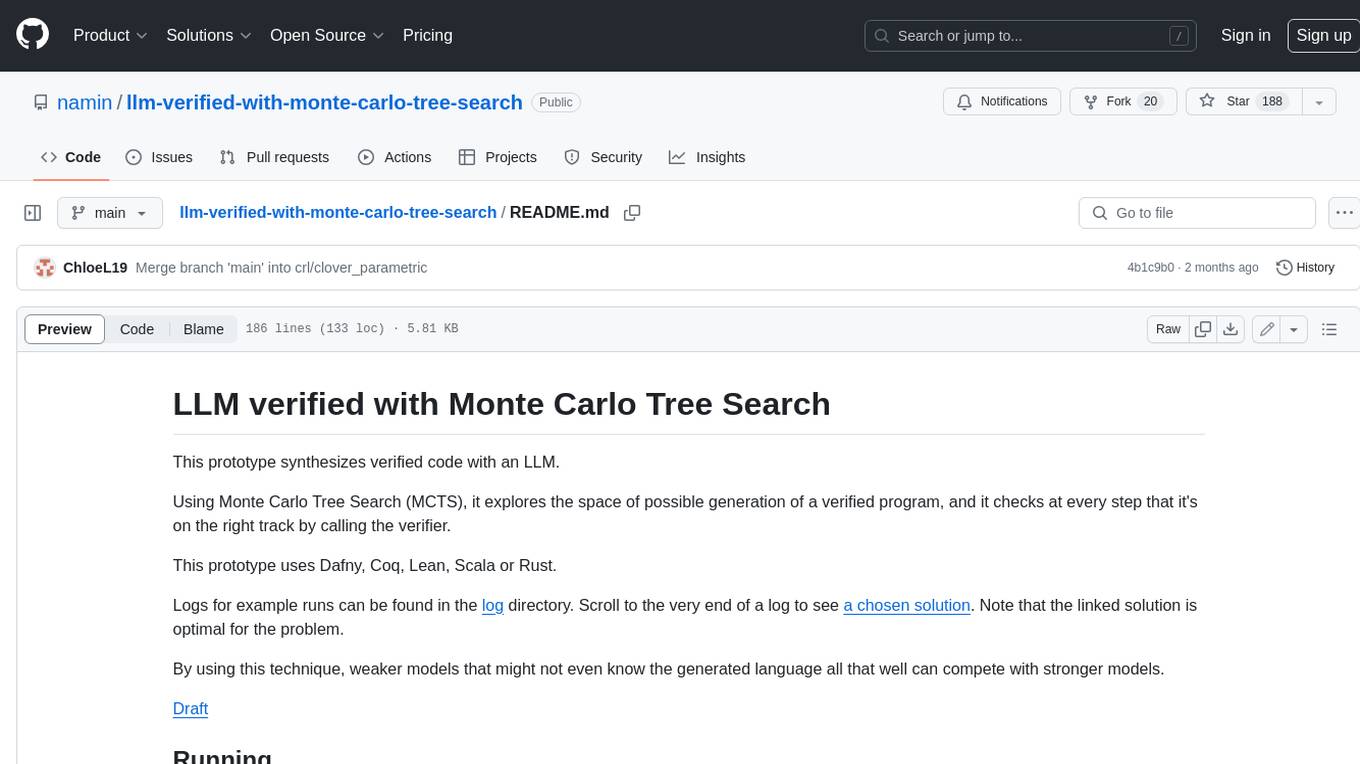
This prototype synthesizes verified code with an LLM using Monte Carlo Tree Search (MCTS). It explores the space of possible generation of a verified program and checks at every step that it's on the right track by calling the verifier. This prototype uses Dafny, Coq, Lean, Scala, or Rust. By using this technique, weaker models that might not even know the generated language all that well can compete with stronger models.
README:
This prototype synthesizes verified code with an LLM.
Using Monte Carlo Tree Search (MCTS), it explores the space of possible generation of a verified program, and it checks at every step that it's on the right track by calling the verifier.
This prototype uses Dafny, Coq, Lean, Scala or Rust.
Logs for example runs can be found in the log directory. Scroll to the very end of a log to see a chosen solution. Note that the linked solution is optimal for the problem.
By using this technique, weaker models that might not even know the generated language all that well can compete with stronger models.
Draft (Outstanding Paper Award at Math-AI workshop co-located with NeurIPS 2024)
This project relies on GPU access. It has been tested on a multi-GPU machine with two NVIDIA A100s.
Clone the github repo. Note that it has linked submodules so it should be cloned with the following command:
git clone --recurse-submodules https://github.com/namin/llm-verified-with-monte-carlo-tree-search.git
Note that you will be prompted to paste your huggingface authentication token.
conda create --name llm-verified python=3.10
conda activate llm-verified
pip install -r requirements.txt
huggingface-cli login
(If you want to use the singularity sandbox) Download the llm-verified docker image (created by the Dockerfile here and pushed to the hub) and put it in ~/singularity.
mkdir -p ~/singularity
cd ~/singularity
singularity pull docker://namin/llm-verified
(If you want to use the docker alternative) Download the Docker image: docker pull namin/llm-verified. Use the command line --docker_sandbox.
(If you want to use Dafny) Install Dafny: Download a binary here.
Please confirm that Dafny verification works before experimenting, for example by using the okdafny.py script we provide. We have sometimes run into issues where z3 was not set up correctly, and Dafny skipped the verification process without returning an error code. Should you run into these problems, compile z3 from source and place the executable into your PATH.
(If you want to use Coq) Install Coq: Install opam, then:
opam init
opam install coq
opam install "coq-serapi>=8.10.0+0.7.0"
opam repo add coq-released https://coq.inria.fr/opam/released
opam install coq-hammer
(If you want to use Lean) Install Lean: See detailed instructions here. Then,
git clone https://github.com/leanprover-community/repl.git
and add require mathlib from git "https://github.com/leanprover-community/mathlib4" to the file repl/lakefile.lean and run
curl https://raw.githubusercontent.com/leanprover-community/mathlib4/master/lean-toolchain -o lean-toolchain
lake update
lake build
in the repl directory.
To run the default experiment configuration, which uses the Phind-CodeLlama-34B-v2 LLM to solve the problem_opt0 as specified in prompts.py in Dafny, do:
python run.py
Note that cmdline.py handles the usage of command line arguments for the codebase. To see what arguments are available, do:
python cmdline.py --help
To run with specific arguments, simply add a --[argument name] [desired argument value] for each argument after the original command to run. For example, to execute run.py as before but with Coq instead of Dafny, do:
python run.py --language Coq
For the run that interacts with the user, do:
python run_user.py
For the run that feeds back verifier info, do:
python run_verifier_feedback.py
For the PPO trainer (slow!), do:
python run_ppo.py
For the DPO trainer, have a set of triples in datasets/gen.jsonl.
These can be obtained by concatenating existing triple files:
cd datasets
cat pm_gen.jsonl pm_proof_gen.jsonl opt0.jsonl >gen.jsonl
or by running the DPO triple generator on an existiting problem:
python run_dpo_gen.jsonl
Once you have the file datasets/gen.jsonl, you can run the DPO trainer with the following.
You can set the CUDA_VISIBLE_DEVICES environment variable to whichever device number you want, informed by availability from nvidia-smi.
export CUDA_VISIBLE_DEVICES=1
python run_dpo.py
The resulting model will be in ./my_dpo_model and can be loaded with the command-line argument --base_model_name ./my_dpo_model.
For a run that selects the next completion diversely, do:
python run_diversity.py
For a more extensive prompt populated with the goal to prove (Coq only) -- do:
python run_focus.py --language Coq
For a more extensive prompt which creates lemmas from failures (Coq only) -- do:
python run_meta.py --language Coq
To a run a certain flavor of experiment on one of the prompts used in the VMCTS paper, do something like the following. For example, to run the logic in run_intermediate_expansion.py on opt0, do:
python experiments.py --experiment_name run_intermediate_expansion.py --n_trials 10 --mins_timeout 10 --language Dafny --problem_name problem_opt0 --seed 42 --remove_hints True
To run a certain flavor of experiment on the Clover benchmark dataset, do something like the following. For example, to run the logic in run_intermediate_expansion.py on Clover, do:
python experiments_clover.py --experiment_name run_intermediate_expansion.py
To log the results of any experiment in the log/ directory, place the following before the experiment command:
./log.sh log/name_of_log_file.txt
For example, to log the results of the intermediate expansion experiment on opt0 you could run:
./log.sh log/intermediate-expansion-01.txt python experiments.py --experiment_name run_intermediate_expansion.py --n_trials 10 --mins_timeout 10 --language Dafny --problem_name problem_opt0 --seed 42 --remove_hints True
Add your unit tests to the test_dict, the final element of the prompt tuple.
Each key-value pair in this dictionary represents one or more unit tests. The key is some
string that has to occur in the generated code for the tests to run. The value is
a set of tests (think of assertions) that make up the test. Within the value string,
use the test(bool) function. Example: {'evaluate': "test(fac(5) == 120)"}.
You can either put each single assertion on its own line (test(fac(5) == 120)\ntest(fac(4) == 30)),
in its own key-value-pair, or and all of them together (test(fac(5) == 120 and fac(4) == 30)).
@misc{brandfonbrener2024vermctssynthesizingmultistepprograms,
title={VerMCTS: Synthesizing Multi-Step Programs using a Verifier, a Large Language Model, and Tree Search},
author={David Brandfonbrener and Simon Henniger and Sibi Raja and Tarun Prasad and Chloe Loughridge and Federico Cassano and Sabrina Ruixin Hu and Jianang Yang and William E. Byrd and Robert Zinkov and Nada Amin},
year={2024},
eprint={2402.08147},
archivePrefix={arXiv},
primaryClass={cs.SE},
url={https://arxiv.org/abs/2402.08147},
}
For Tasks:
Click tags to check more tools for each tasksFor Jobs:
Alternative AI tools for llm-verified-with-monte-carlo-tree-search
Similar Open Source Tools

llm-verified-with-monte-carlo-tree-search
This prototype synthesizes verified code with an LLM using Monte Carlo Tree Search (MCTS). It explores the space of possible generation of a verified program and checks at every step that it's on the right track by calling the verifier. This prototype uses Dafny, Coq, Lean, Scala, or Rust. By using this technique, weaker models that might not even know the generated language all that well can compete with stronger models.
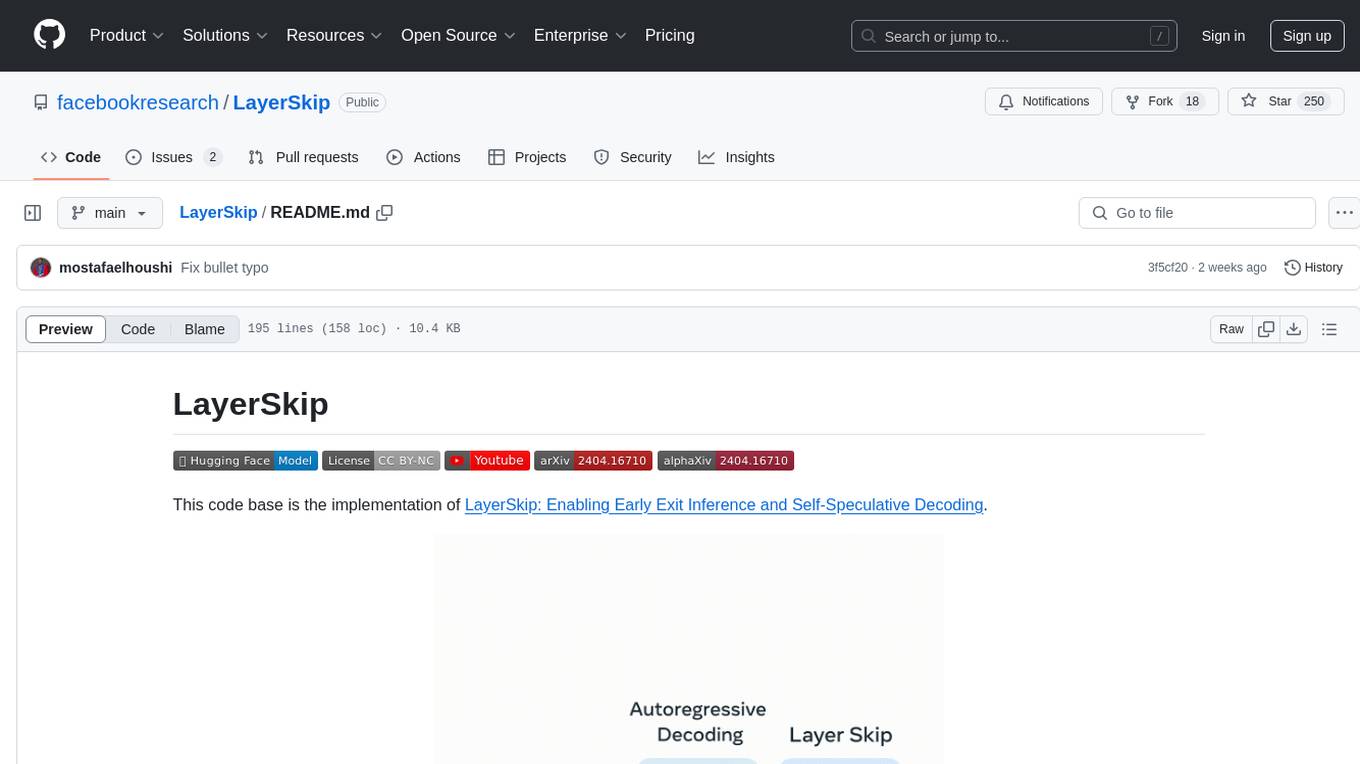
LayerSkip
LayerSkip is an implementation enabling early exit inference and self-speculative decoding. It provides a code base for running models trained using the LayerSkip recipe, offering speedup through self-speculative decoding. The tool integrates with Hugging Face transformers and provides checkpoints for various LLMs. Users can generate tokens, benchmark on datasets, evaluate tasks, and sweep over hyperparameters to optimize inference speed. The tool also includes correctness verification scripts and Docker setup instructions. Additionally, other implementations like gpt-fast and Native HuggingFace are available. Training implementation is a work-in-progress, and contributions are welcome under the CC BY-NC license.
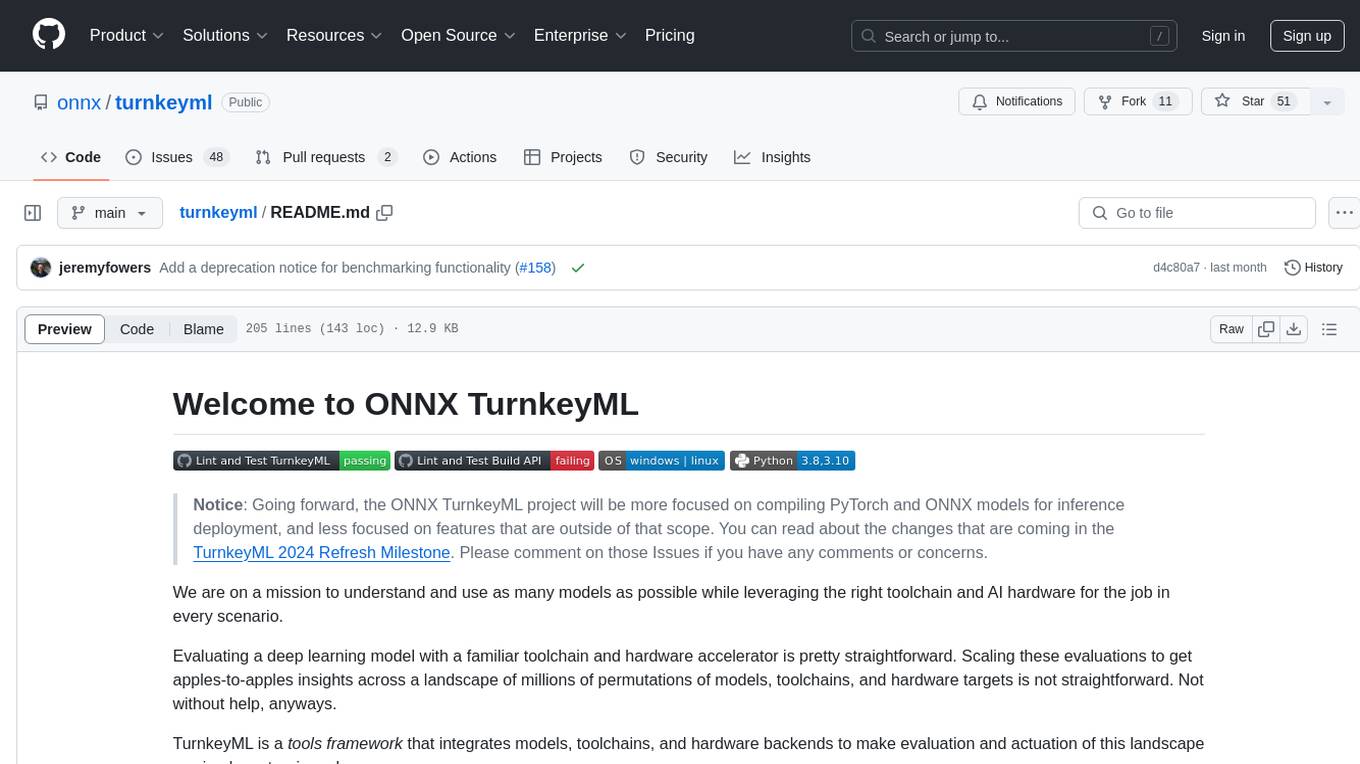
turnkeyml
TurnkeyML is a tools framework that integrates models, toolchains, and hardware backends to simplify the evaluation and actuation of deep learning models. It supports use cases like exporting ONNX files, performance validation, functional coverage measurement, stress testing, and model insights analysis. The framework consists of analysis, build, runtime, reporting tools, and a models corpus, seamlessly integrated to provide comprehensive functionality with simple commands. Extensible through plugins, it offers support for various export and optimization tools and AI runtimes. The project is actively seeking collaborators and is licensed under Apache 2.0.
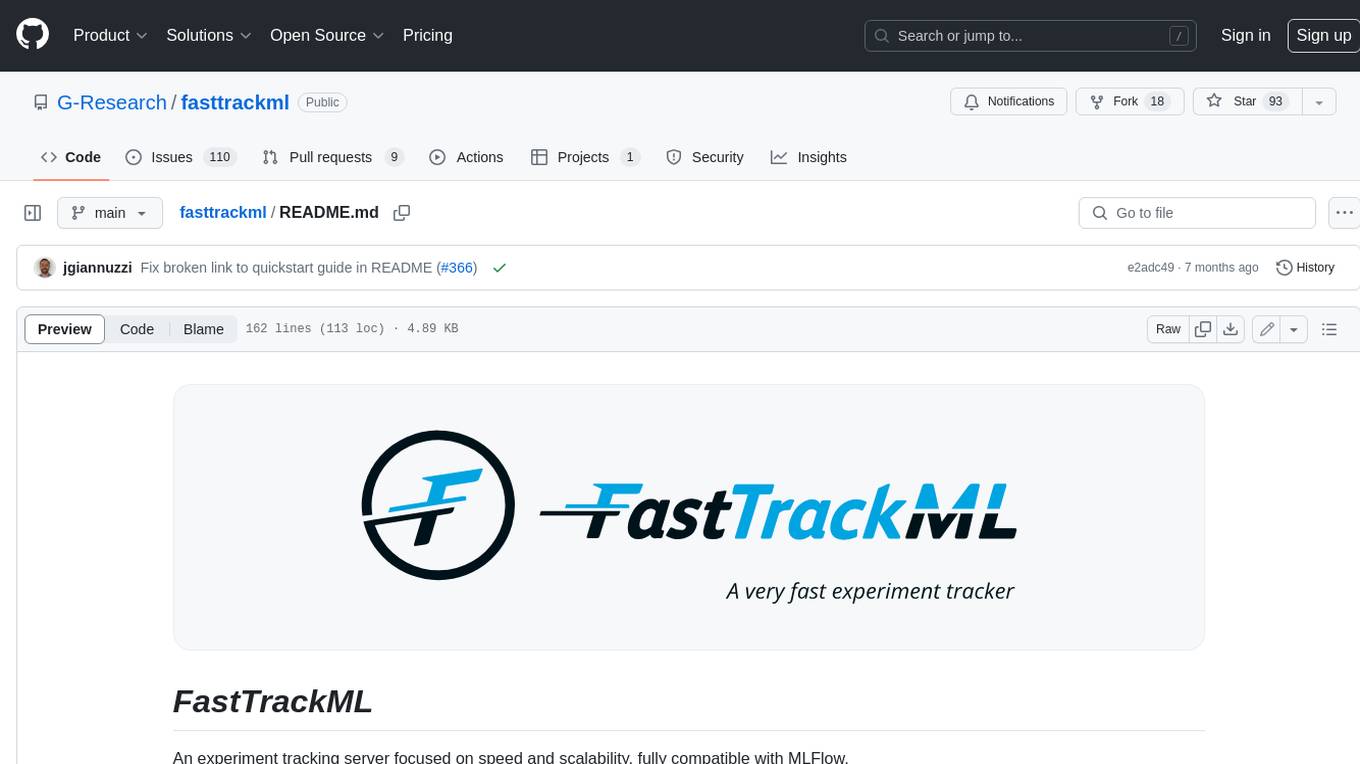
fasttrackml
FastTrackML is an experiment tracking server focused on speed and scalability, fully compatible with MLFlow. It provides a user-friendly interface to track and visualize your machine learning experiments, making it easy to compare different models and identify the best performing ones. FastTrackML is open source and can be easily installed and run with pip or Docker. It is also compatible with the MLFlow Python package, making it easy to integrate with your existing MLFlow workflows.
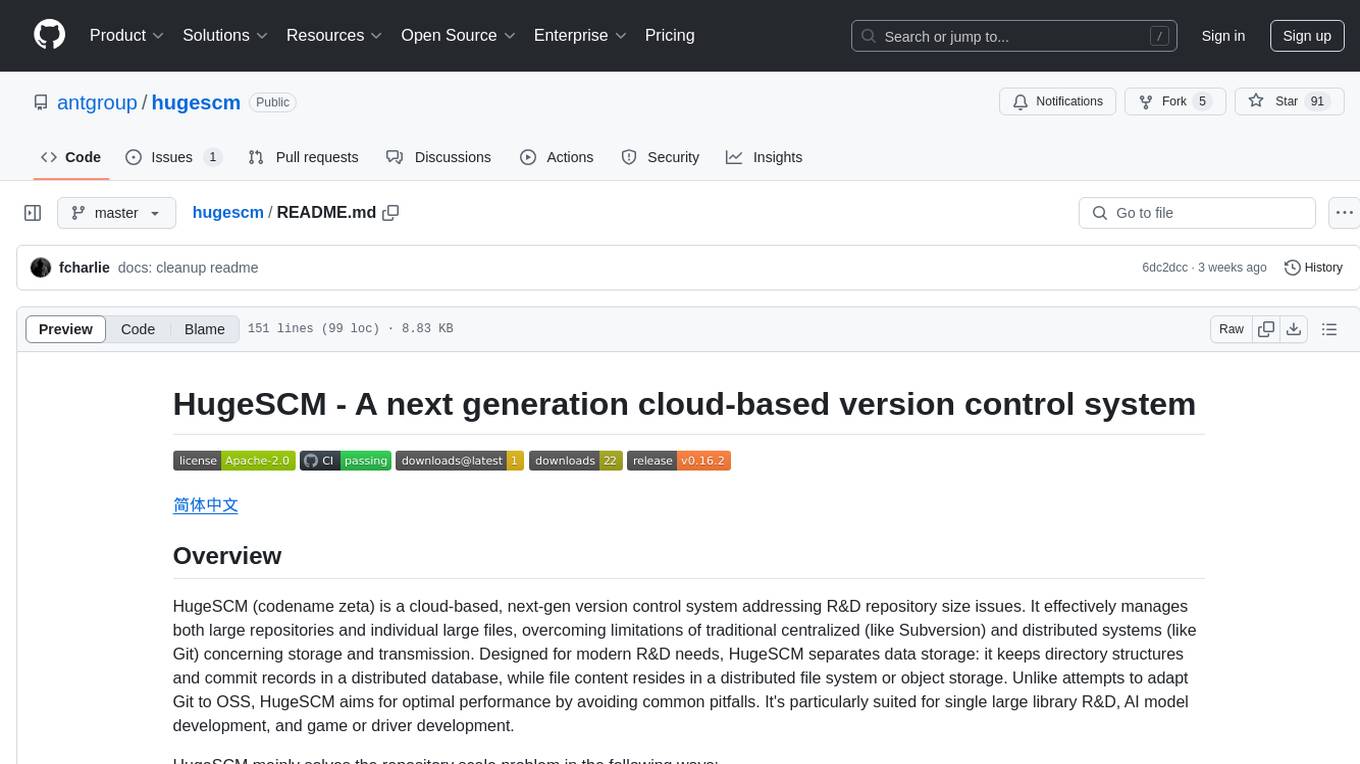
hugescm
HugeSCM is a cloud-based version control system designed to address R&D repository size issues. It effectively manages large repositories and individual large files by separating data storage and utilizing advanced algorithms and data structures. It aims for optimal performance in handling version control operations of large-scale repositories, making it suitable for single large library R&D, AI model development, and game or driver development.
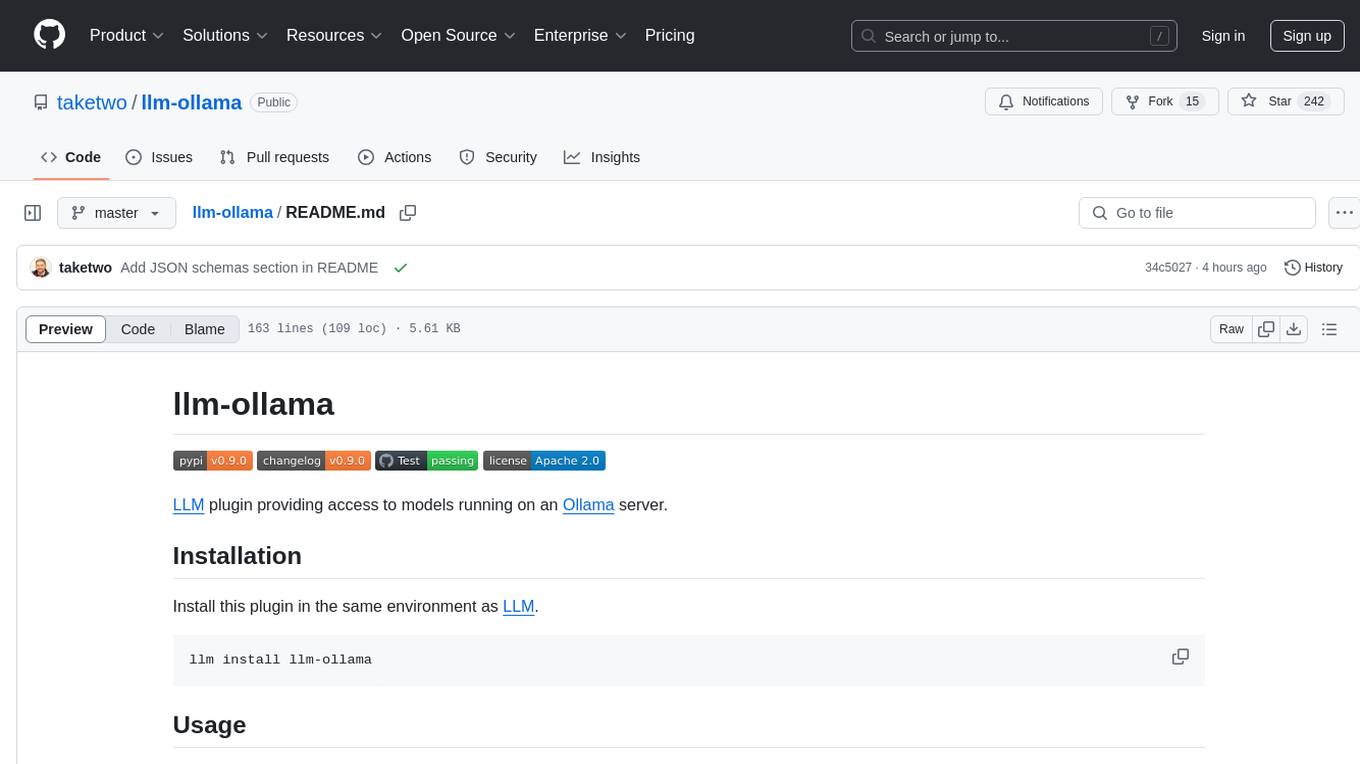
llm-ollama
LLM-ollama is a plugin that provides access to models running on an Ollama server. It allows users to query the Ollama server for a list of models, register them with LLM, and use them for prompting, chatting, and embedding. The plugin supports image attachments, embeddings, JSON schemas, async models, model aliases, and model options. Users can interact with Ollama models through the plugin in a seamless and efficient manner.
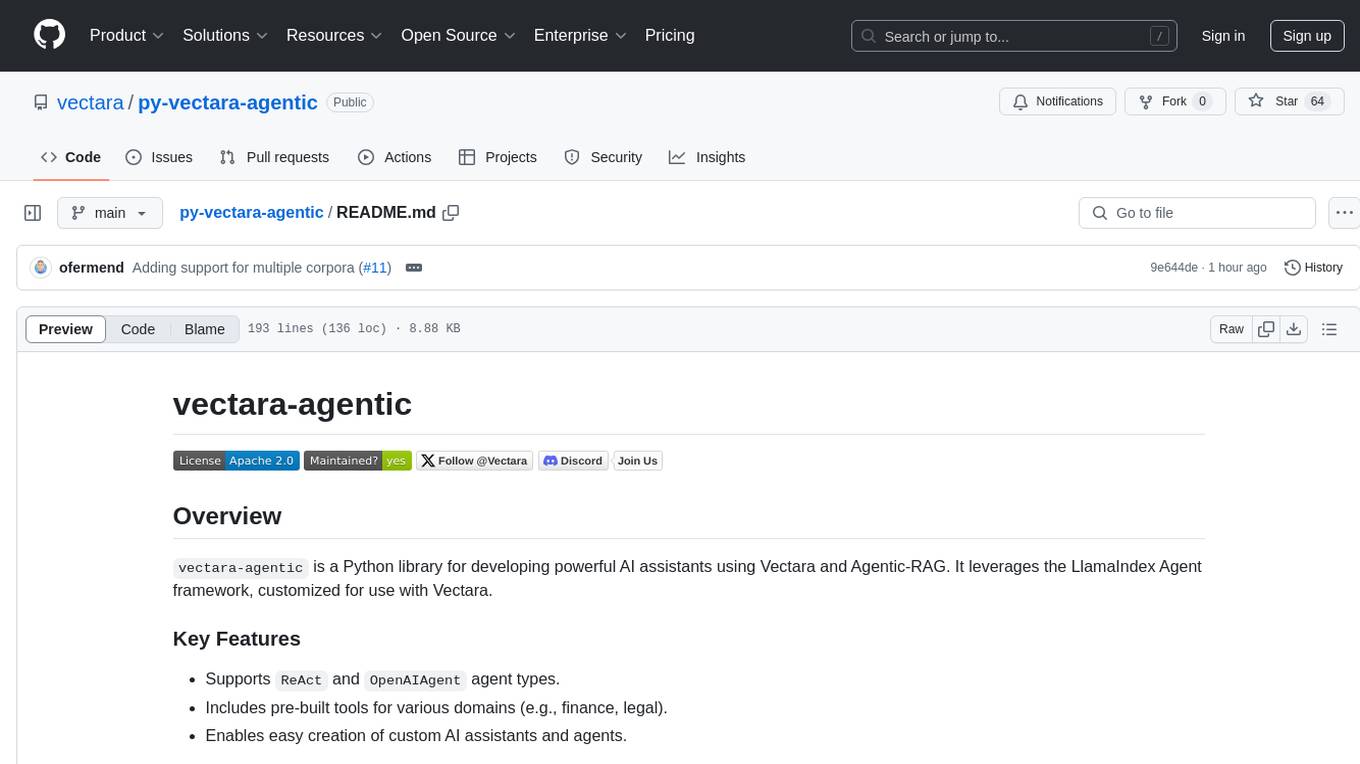
py-vectara-agentic
The `vectara-agentic` Python library is designed for developing powerful AI assistants using Vectara and Agentic-RAG. It supports various agent types, includes pre-built tools for domains like finance and legal, and enables easy creation of custom AI assistants and agents. The library provides tools for summarizing text, rephrasing text, legal tasks like summarizing legal text and critiquing as a judge, financial tasks like analyzing balance sheets and income statements, and database tools for inspecting and querying databases. It also supports observability via LlamaIndex and Arize Phoenix integration.
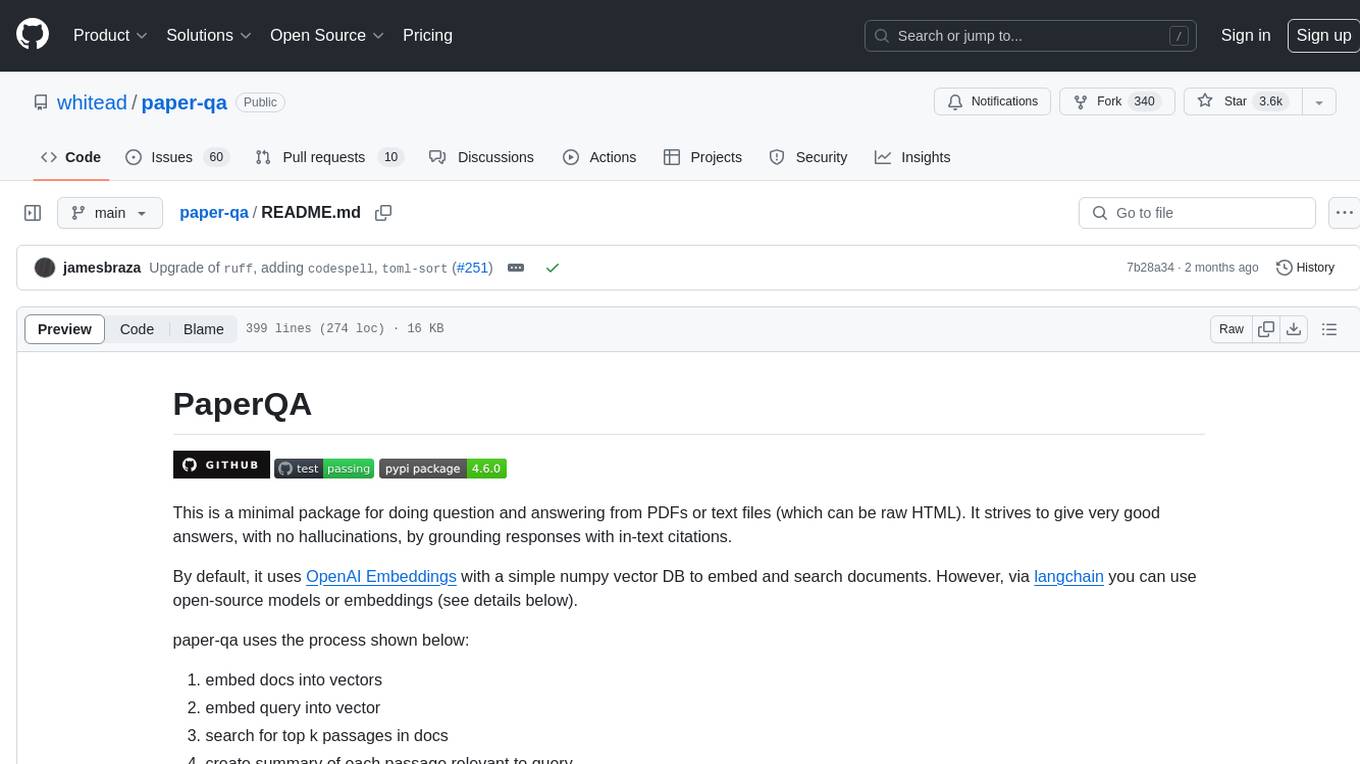
paper-qa
PaperQA is a minimal package for question and answering from PDFs or text files, providing very good answers with in-text citations. It uses OpenAI Embeddings to embed and search documents, and follows a process of embedding docs and queries, searching for top passages, creating summaries, scoring and selecting relevant summaries, putting summaries into prompt, and generating answers. Users can customize prompts and use various models for embeddings and LLMs. The tool can be used asynchronously and supports adding documents from paths, files, or URLs.
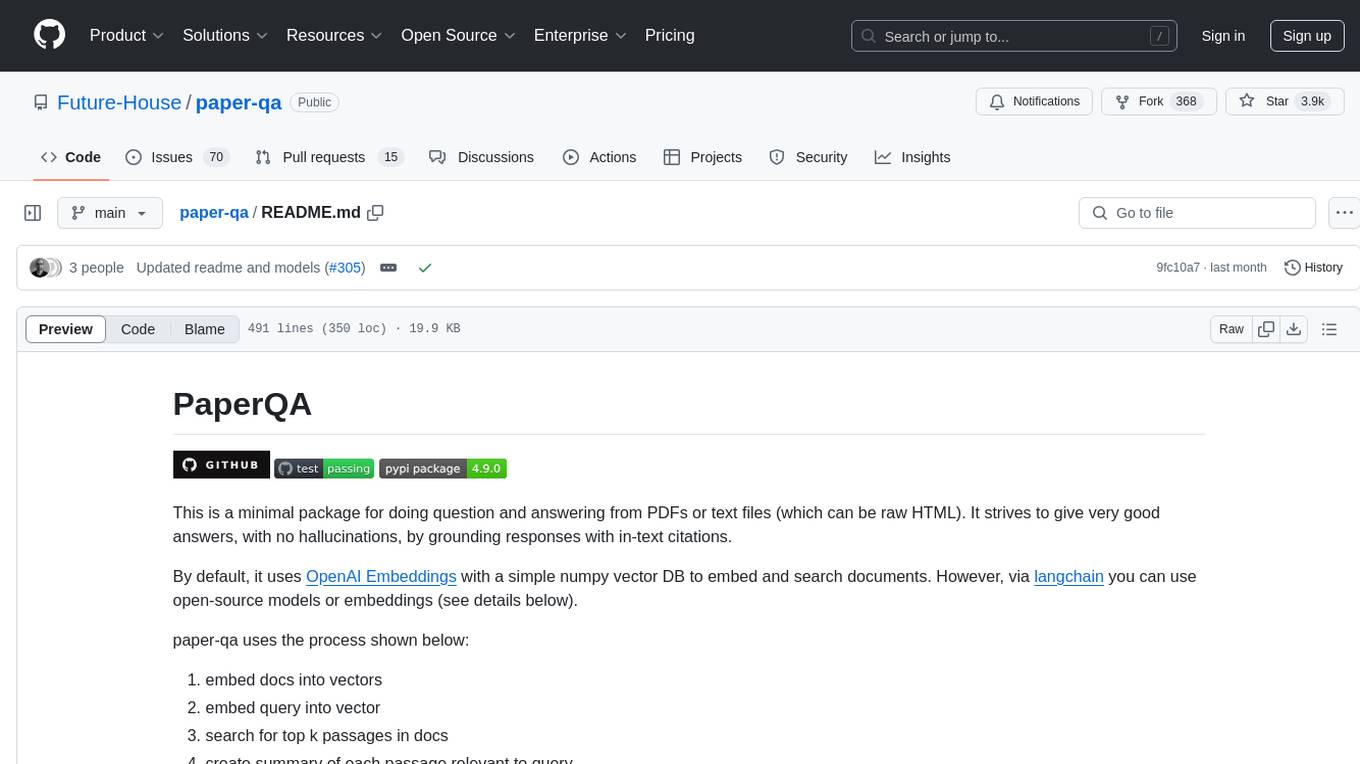
paper-qa
PaperQA is a minimal package for question and answering from PDFs or text files, providing very good answers with in-text citations. It uses OpenAI Embeddings to embed and search documents, and includes a process of embedding docs, queries, searching for top passages, creating summaries, using an LLM to re-score and select relevant summaries, putting summaries into prompt, and generating answers. The tool can be used to answer specific questions related to scientific research by leveraging citations and relevant passages from documents.
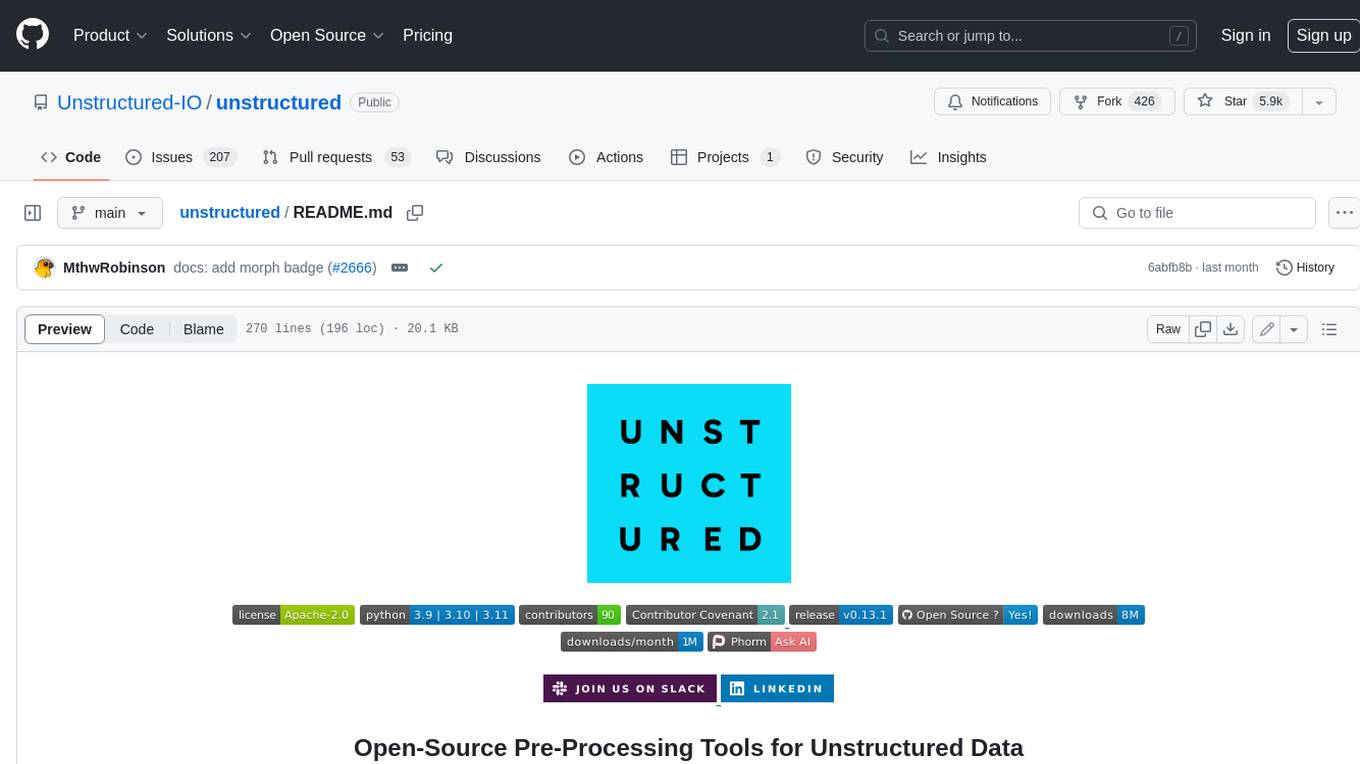
unstructured
The `unstructured` library provides open-source components for ingesting and pre-processing images and text documents, such as PDFs, HTML, Word docs, and many more. The use cases of `unstructured` revolve around streamlining and optimizing the data processing workflow for LLMs. `unstructured` modular functions and connectors form a cohesive system that simplifies data ingestion and pre-processing, making it adaptable to different platforms and efficient in transforming unstructured data into structured outputs.
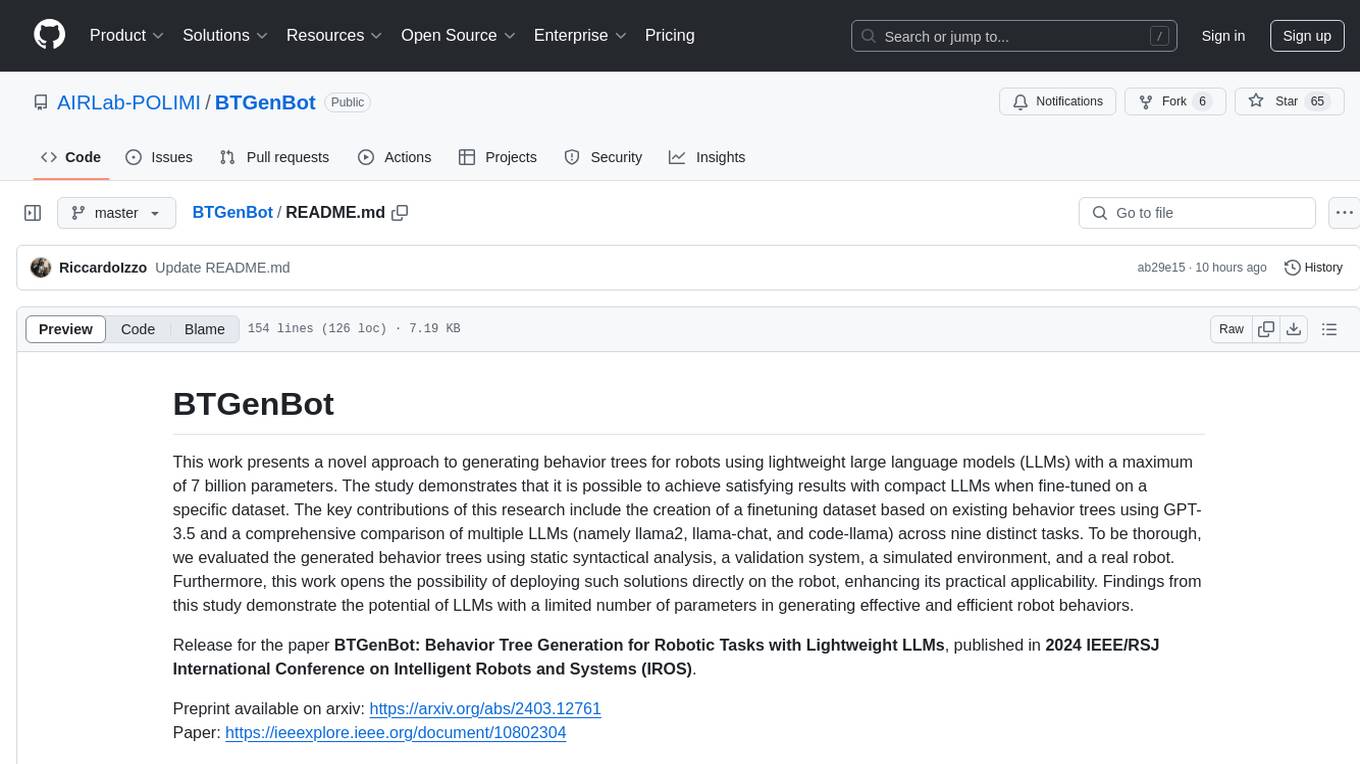
BTGenBot
BTGenBot is a tool that generates behavior trees for robots using lightweight large language models (LLMs) with a maximum of 7 billion parameters. It fine-tunes on a specific dataset, compares multiple LLMs, and evaluates generated behavior trees using various methods. The tool demonstrates the potential of LLMs with a limited number of parameters in creating effective and efficient robot behaviors.
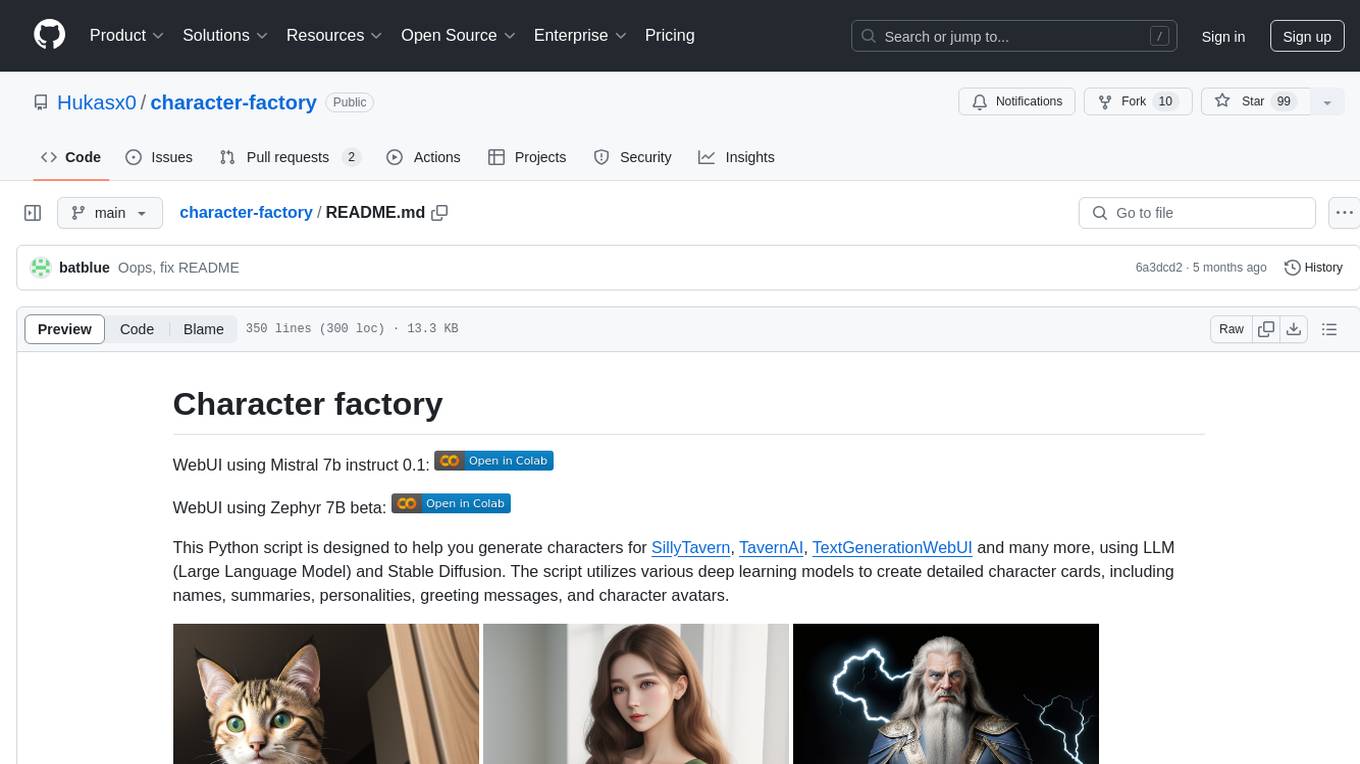
character-factory
Character Factory is a Python script designed to generate detailed character cards for SillyTavern, TavernAI, TextGenerationWebUI, and more using Large Language Model (LLM) and Stable Diffusion. It streamlines character generation by leveraging deep learning models to create names, summaries, personalities, greeting messages, and avatars for characters. The tool provides an easy way to create unique and imaginative characters for storytelling, chatting, and other purposes.
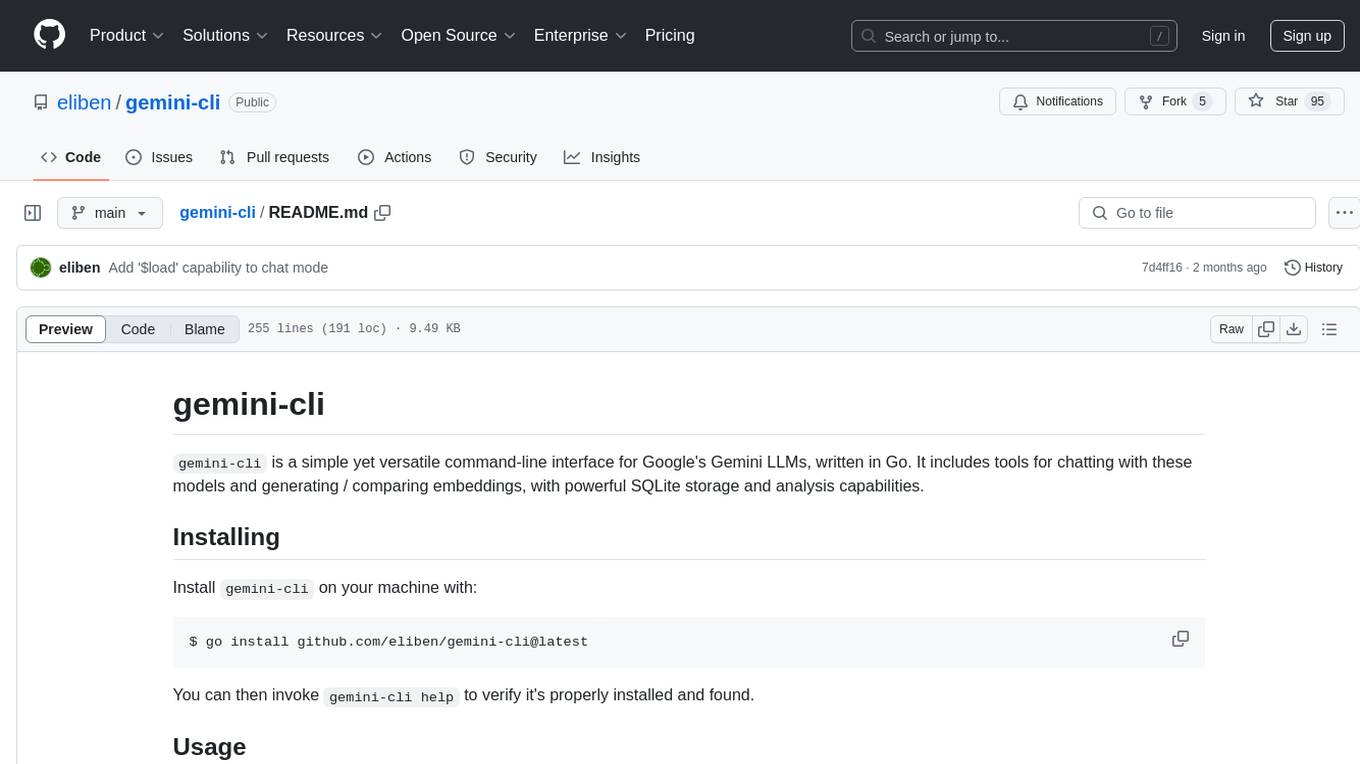
gemini-cli
gemini-cli is a versatile command-line interface for Google's Gemini LLMs, written in Go. It includes tools for chatting with models, generating/comparing embeddings, and storing data in SQLite for analysis. Users can interact with Gemini models through various subcommands like prompt, chat, counttok, embed content, embed db, and embed similar.
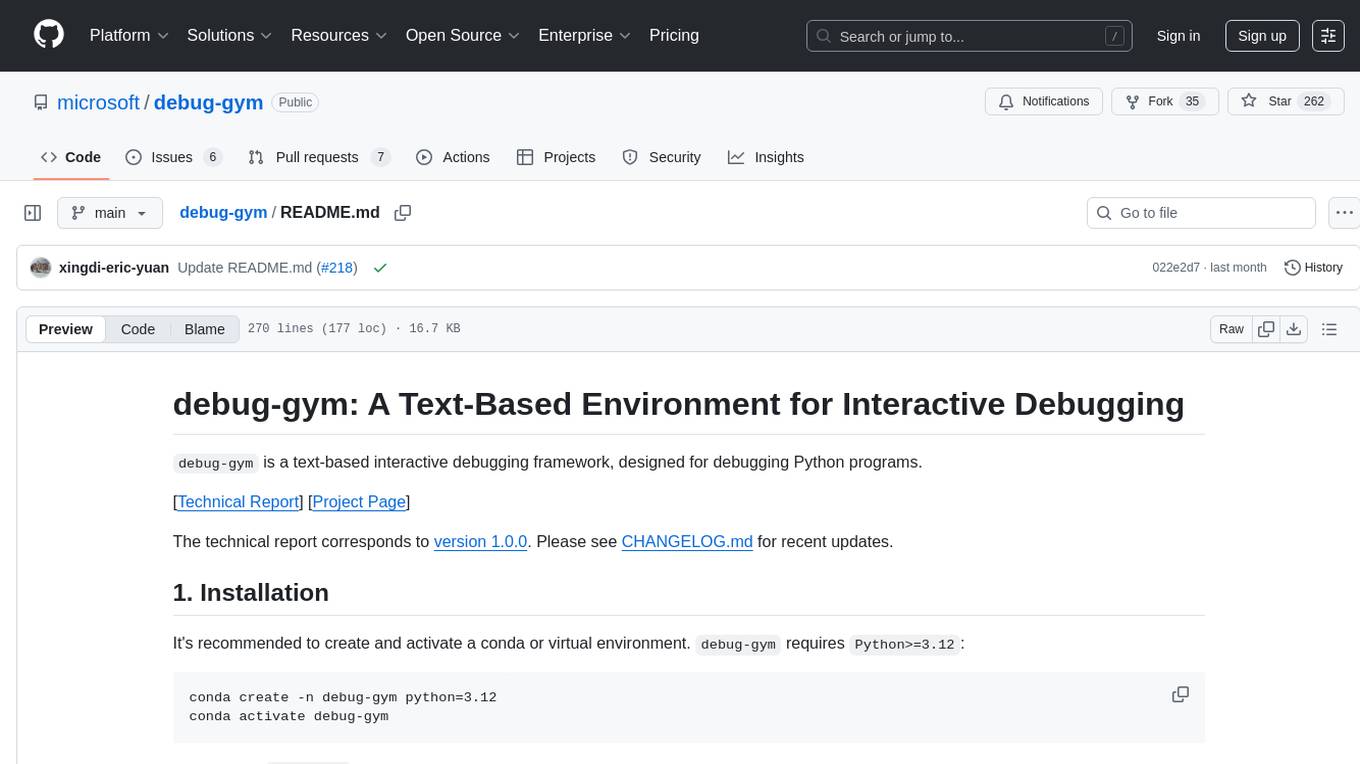
debug-gym
debug-gym is a text-based interactive debugging framework designed for debugging Python programs. It provides an environment where agents can interact with code repositories, use various tools like pdb and grep to investigate and fix bugs, and propose code patches. The framework supports different LLM backends such as OpenAI, Azure OpenAI, and Anthropic. Users can customize tools, manage environment states, and run agents to debug code effectively. debug-gym is modular, extensible, and suitable for interactive debugging tasks in a text-based environment.
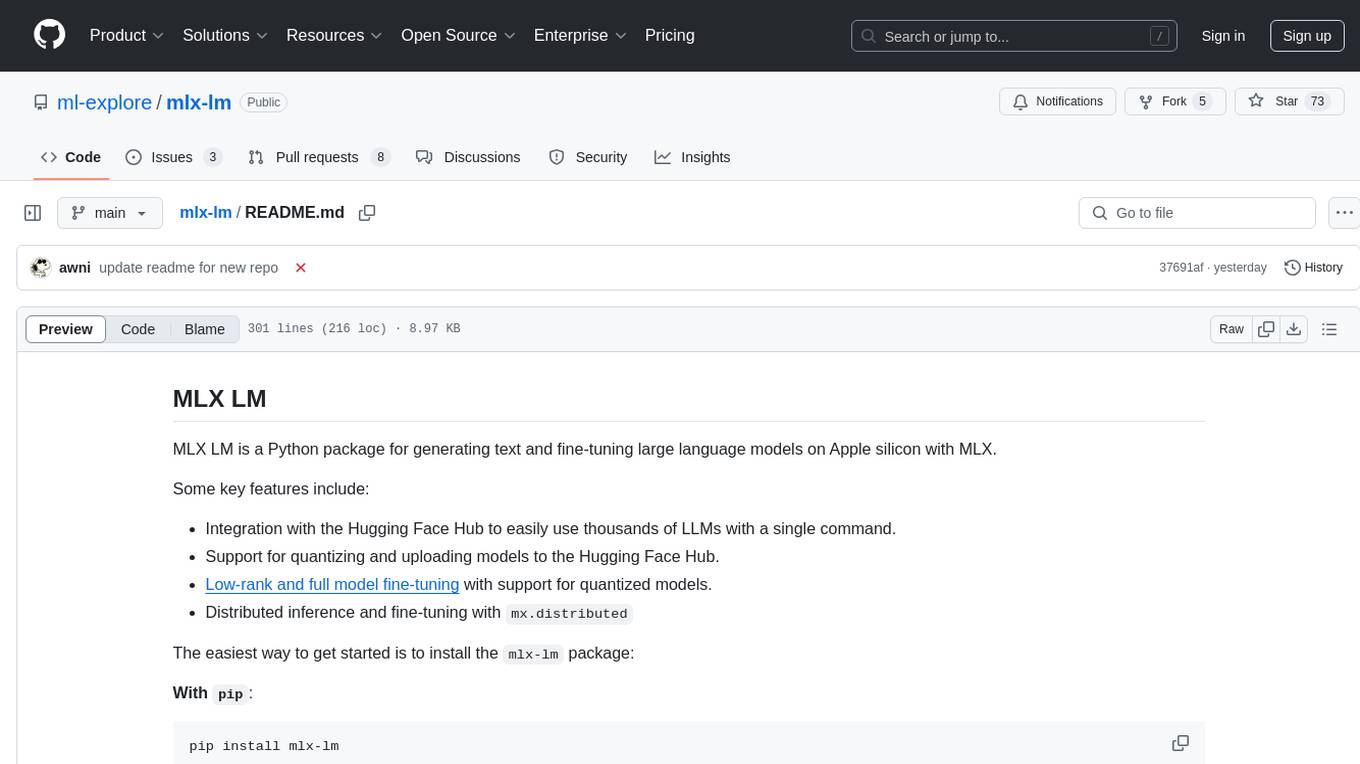
mlx-lm
MLX LM is a Python package designed for generating text and fine-tuning large language models on Apple silicon using MLX. It offers integration with the Hugging Face Hub for easy access to thousands of LLMs, support for quantizing and uploading models to the Hub, low-rank and full model fine-tuning capabilities, and distributed inference and fine-tuning with `mx.distributed`. Users can interact with the package through command line options or the Python API, enabling tasks such as text generation, chatting with language models, model conversion, streaming generation, and sampling. MLX LM supports various Hugging Face models and provides tools for efficient scaling to long prompts and generations, including a rotating key-value cache and prompt caching. It requires macOS 15.0 or higher for optimal performance.

LLM-Merging
LLM-Merging is a repository containing starter code for the LLM-Merging competition. It provides a platform for efficiently building LLMs through merging methods. Users can develop new merging methods by creating new files in the specified directory and extending existing classes. The repository includes instructions for setting up the environment, developing new merging methods, testing the methods on specific datasets, and submitting solutions for evaluation. It aims to facilitate the development and evaluation of merging methods for LLMs.
For similar tasks

llm-verified-with-monte-carlo-tree-search
This prototype synthesizes verified code with an LLM using Monte Carlo Tree Search (MCTS). It explores the space of possible generation of a verified program and checks at every step that it's on the right track by calling the verifier. This prototype uses Dafny, Coq, Lean, Scala, or Rust. By using this technique, weaker models that might not even know the generated language all that well can compete with stronger models.
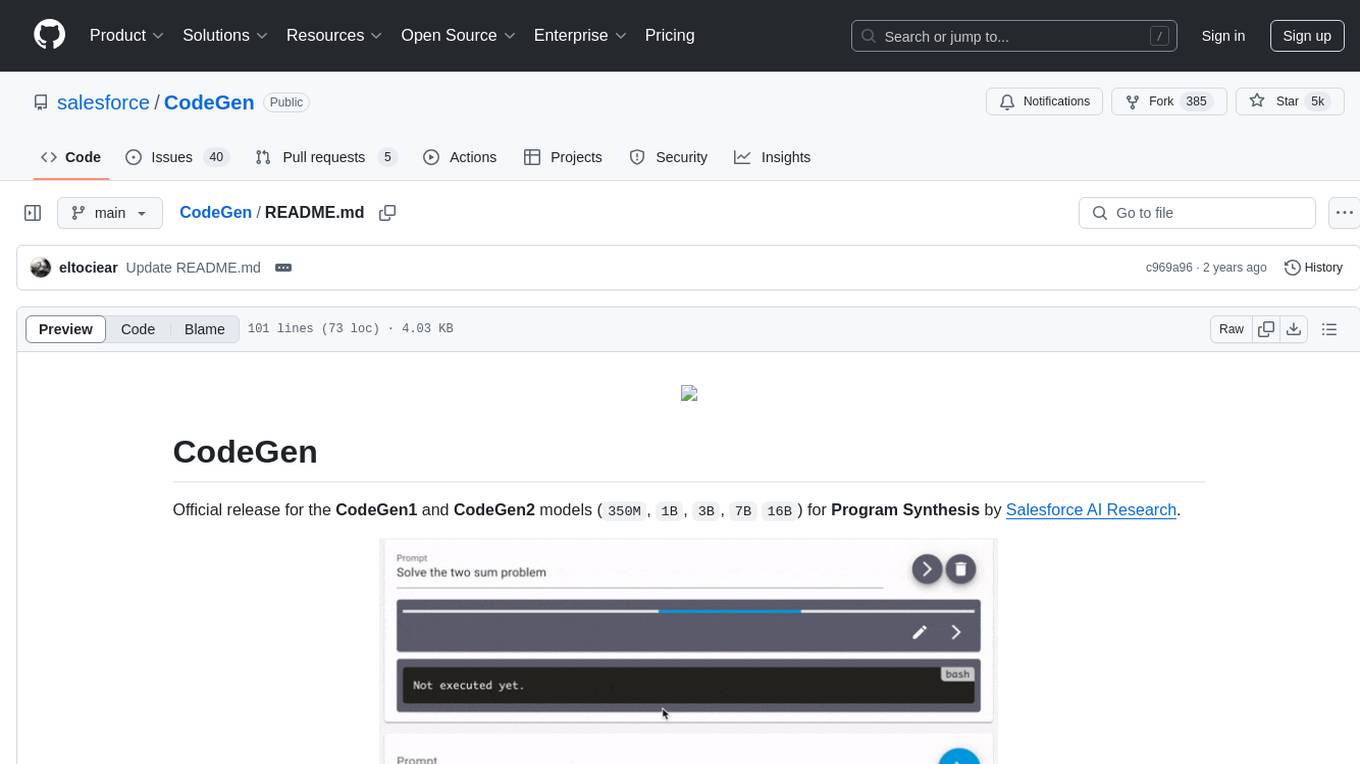
CodeGen
CodeGen is an official release of models for Program Synthesis by Salesforce AI Research. It includes CodeGen1 and CodeGen2 models with varying parameters. The latest version, CodeGen2.5, outperforms previous models. The tool is designed for code generation tasks using large language models trained on programming and natural languages. Users can access the models through the Hugging Face Hub and utilize them for program synthesis and infill sampling. The accompanying Jaxformer library provides support for data pre-processing, training, and fine-tuning of the CodeGen models.
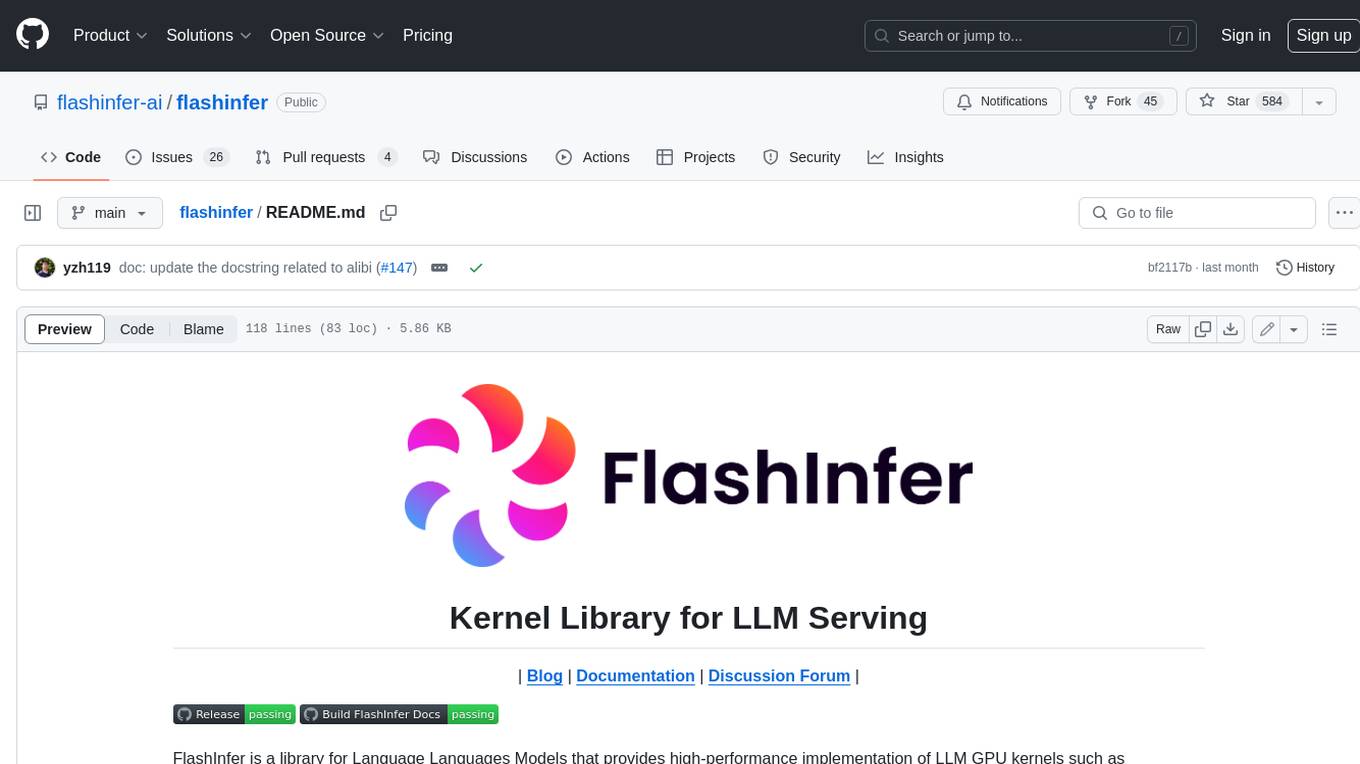
flashinfer
FlashInfer is a library for Language Languages Models that provides high-performance implementation of LLM GPU kernels such as FlashAttention, PageAttention and LoRA. FlashInfer focus on LLM serving and inference, and delivers state-the-art performance across diverse scenarios.

dolma
Dolma is a dataset and toolkit for curating large datasets for (pre)-training ML models. The dataset consists of 3 trillion tokens from a diverse mix of web content, academic publications, code, books, and encyclopedic materials. The toolkit provides high-performance, portable, and extensible tools for processing, tagging, and deduplicating documents. Key features of the toolkit include built-in taggers, fast deduplication, and cloud support.
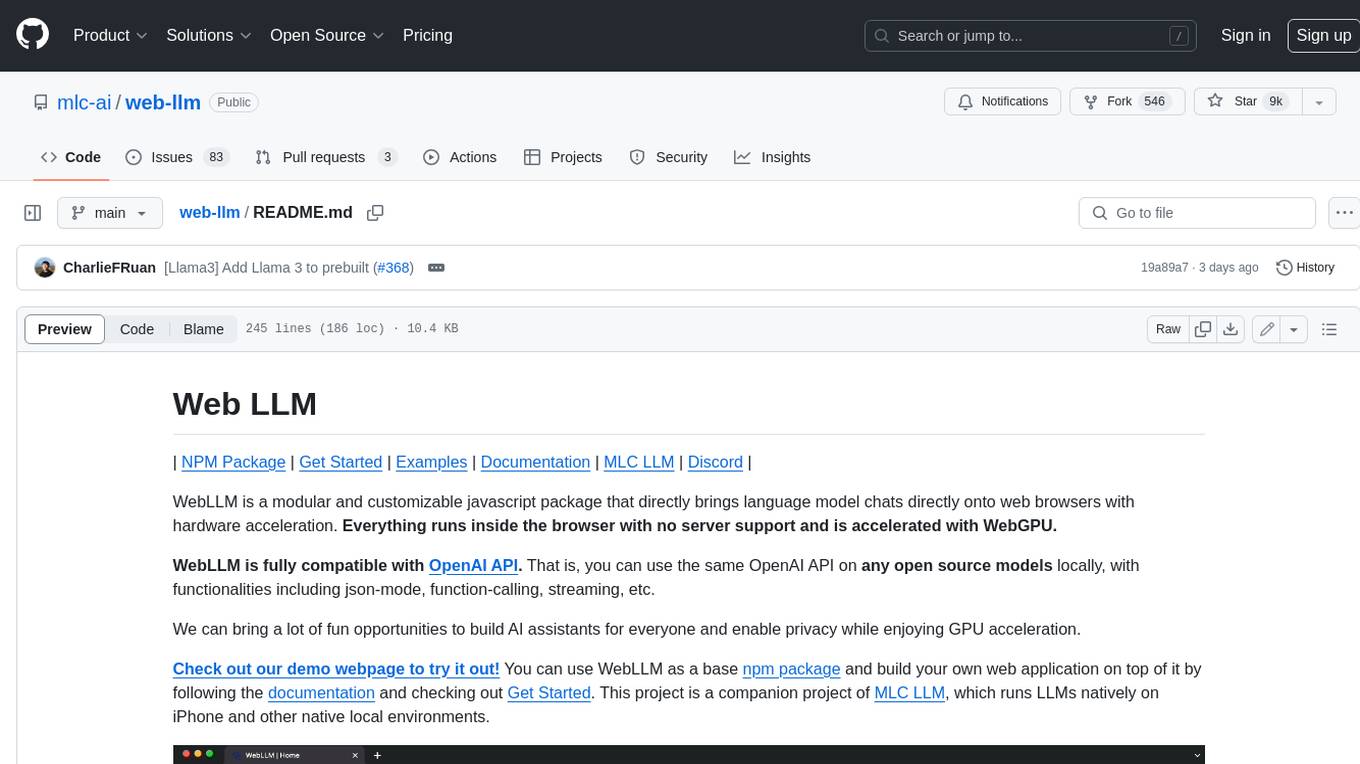
web-llm
WebLLM is a modular and customizable javascript package that directly brings language model chats directly onto web browsers with hardware acceleration. Everything runs inside the browser with no server support and is accelerated with WebGPU. WebLLM is fully compatible with OpenAI API. That is, you can use the same OpenAI API on any open source models locally, with functionalities including json-mode, function-calling, streaming, etc. We can bring a lot of fun opportunities to build AI assistants for everyone and enable privacy while enjoying GPU acceleration.
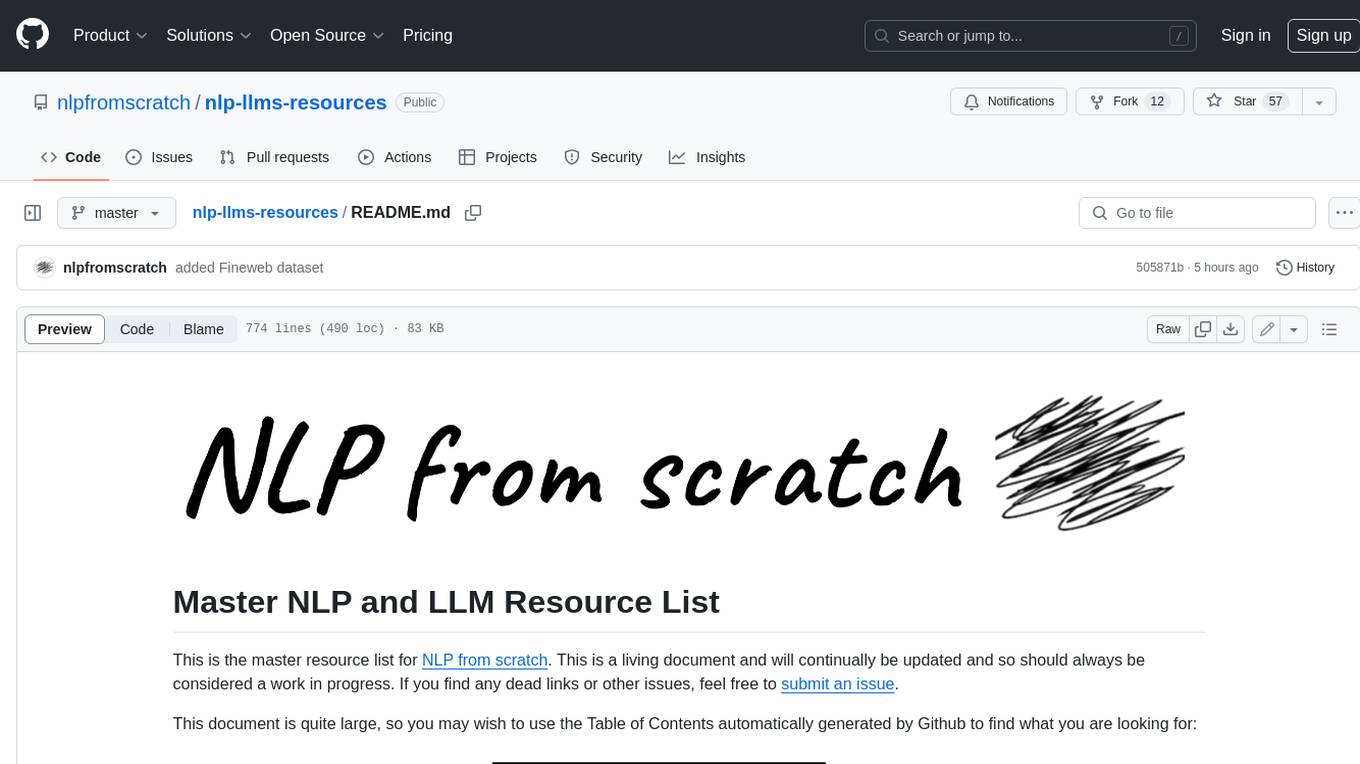
nlp-llms-resources
The 'nlp-llms-resources' repository is a comprehensive resource list for Natural Language Processing (NLP) and Large Language Models (LLMs). It covers a wide range of topics including traditional NLP datasets, data acquisition, libraries for NLP, neural networks, sentiment analysis, optical character recognition, information extraction, semantics, topic modeling, multilingual NLP, domain-specific LLMs, vector databases, ethics, costing, books, courses, surveys, aggregators, newsletters, papers, conferences, and societies. The repository provides valuable information and resources for individuals interested in NLP and LLMs.
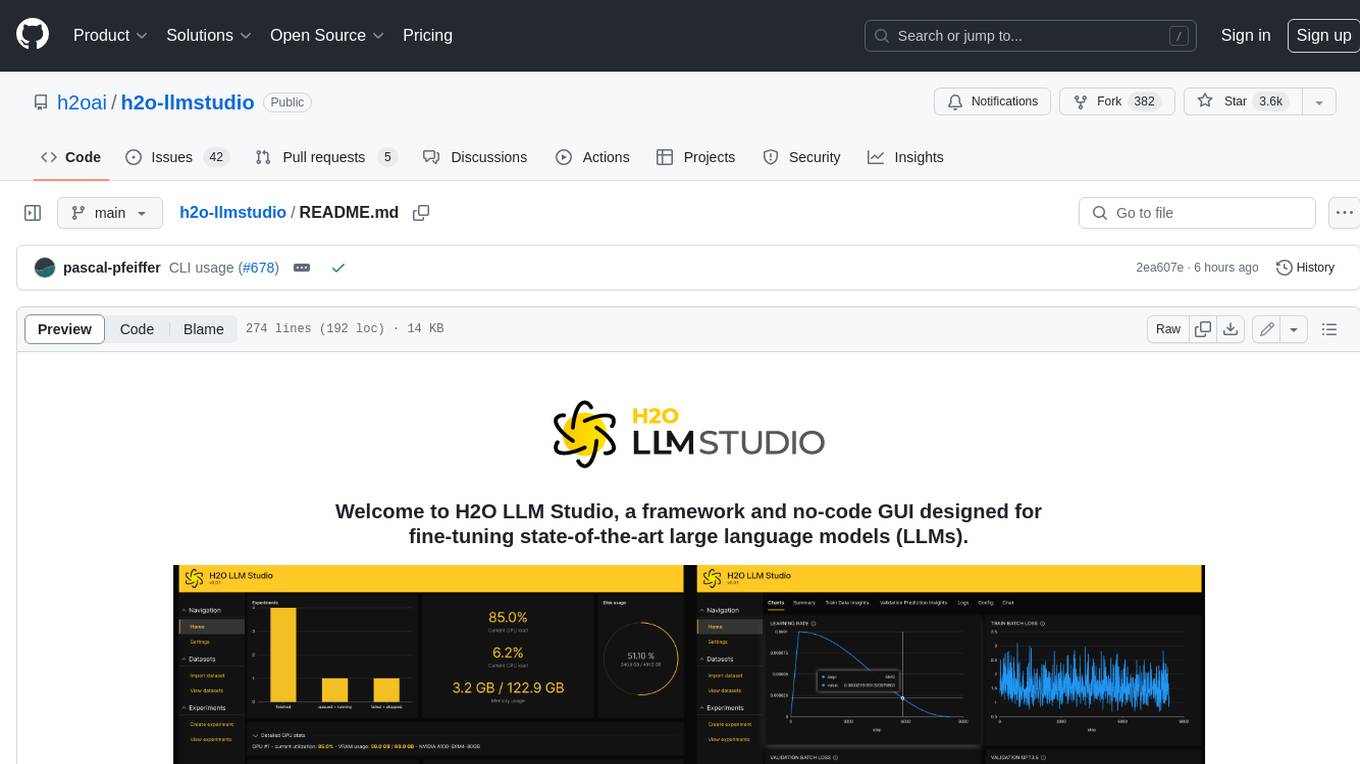
h2o-llmstudio
H2O LLM Studio is a framework and no-code GUI designed for fine-tuning state-of-the-art large language models (LLMs). With H2O LLM Studio, you can easily and effectively fine-tune LLMs without the need for any coding experience. The GUI is specially designed for large language models, and you can finetune any LLM using a large variety of hyperparameters. You can also use recent finetuning techniques such as Low-Rank Adaptation (LoRA) and 8-bit model training with a low memory footprint. Additionally, you can use Reinforcement Learning (RL) to finetune your model (experimental), use advanced evaluation metrics to judge generated answers by the model, track and compare your model performance visually, and easily export your model to the Hugging Face Hub and share it with the community.
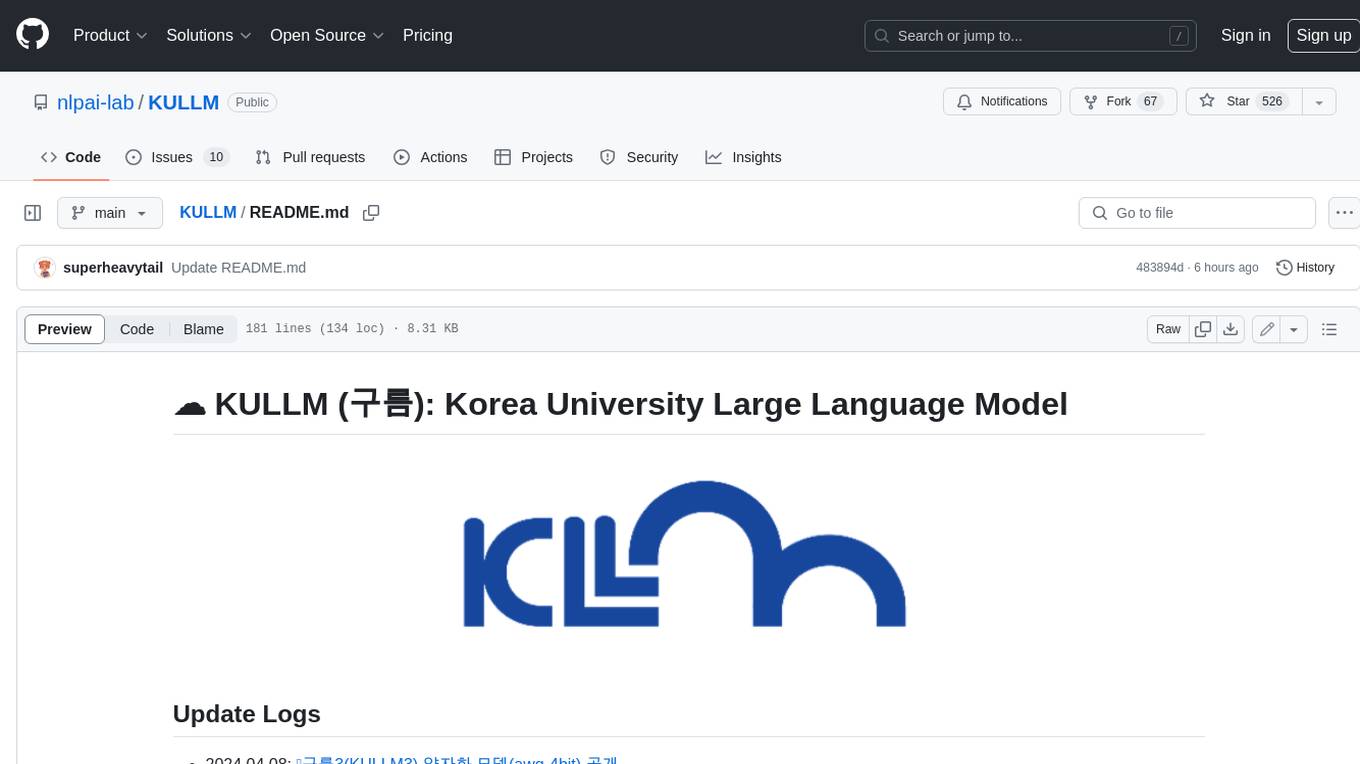
KULLM
KULLM (구름) is a Korean Large Language Model developed by Korea University NLP & AI Lab and HIAI Research Institute. It is based on the upstage/SOLAR-10.7B-v1.0 model and has been fine-tuned for instruction. The model has been trained on 8×A100 GPUs and is capable of generating responses in Korean language. KULLM exhibits hallucination and repetition phenomena due to its decoding strategy. Users should be cautious as the model may produce inaccurate or harmful results. Performance may vary in benchmarks without a fixed system prompt.
For similar jobs

weave
Weave is a toolkit for developing Generative AI applications, built by Weights & Biases. With Weave, you can log and debug language model inputs, outputs, and traces; build rigorous, apples-to-apples evaluations for language model use cases; and organize all the information generated across the LLM workflow, from experimentation to evaluations to production. Weave aims to bring rigor, best-practices, and composability to the inherently experimental process of developing Generative AI software, without introducing cognitive overhead.

agentcloud
AgentCloud is an open-source platform that enables companies to build and deploy private LLM chat apps, empowering teams to securely interact with their data. It comprises three main components: Agent Backend, Webapp, and Vector Proxy. To run this project locally, clone the repository, install Docker, and start the services. The project is licensed under the GNU Affero General Public License, version 3 only. Contributions and feedback are welcome from the community.

oss-fuzz-gen
This framework generates fuzz targets for real-world `C`/`C++` projects with various Large Language Models (LLM) and benchmarks them via the `OSS-Fuzz` platform. It manages to successfully leverage LLMs to generate valid fuzz targets (which generate non-zero coverage increase) for 160 C/C++ projects. The maximum line coverage increase is 29% from the existing human-written targets.

LLMStack
LLMStack is a no-code platform for building generative AI agents, workflows, and chatbots. It allows users to connect their own data, internal tools, and GPT-powered models without any coding experience. LLMStack can be deployed to the cloud or on-premise and can be accessed via HTTP API or triggered from Slack or Discord.

VisionCraft
The VisionCraft API is a free API for using over 100 different AI models. From images to sound.

kaito
Kaito is an operator that automates the AI/ML inference model deployment in a Kubernetes cluster. It manages large model files using container images, avoids tuning deployment parameters to fit GPU hardware by providing preset configurations, auto-provisions GPU nodes based on model requirements, and hosts large model images in the public Microsoft Container Registry (MCR) if the license allows. Using Kaito, the workflow of onboarding large AI inference models in Kubernetes is largely simplified.

PyRIT
PyRIT is an open access automation framework designed to empower security professionals and ML engineers to red team foundation models and their applications. It automates AI Red Teaming tasks to allow operators to focus on more complicated and time-consuming tasks and can also identify security harms such as misuse (e.g., malware generation, jailbreaking), and privacy harms (e.g., identity theft). The goal is to allow researchers to have a baseline of how well their model and entire inference pipeline is doing against different harm categories and to be able to compare that baseline to future iterations of their model. This allows them to have empirical data on how well their model is doing today, and detect any degradation of performance based on future improvements.

Azure-Analytics-and-AI-Engagement
The Azure-Analytics-and-AI-Engagement repository provides packaged Industry Scenario DREAM Demos with ARM templates (Containing a demo web application, Power BI reports, Synapse resources, AML Notebooks etc.) that can be deployed in a customer’s subscription using the CAPE tool within a matter of few hours. Partners can also deploy DREAM Demos in their own subscriptions using DPoC.
